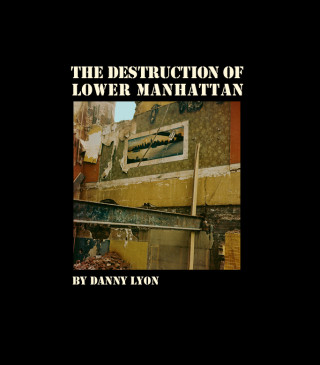One cold winter day Shirley Fisher, a PhD candidate I knew at the University of Chicago, brought over some peyote buttons. We ate them in the morning with cereal to cover the strong taste. Then we went out for a walk down near the Sailors’ Home, on the East River, near the tip of Manhattan. I had my Rolleiflex over my arm. A few blocks past Mark’s on Front Street we passed a building that was being demolished. I climbed inside to find that the door and roof had been removed to expose the old wooden beams. I turned the camera on its side, with the beams slicing across my square frame at a diagonal, lit by the bright sunlight coming in from the sky. It was an artsy picture, the kind I normally hated. Being stoned lowered my standards. Loading a Rolleiflex is a challenge for the sober. On peyote it was a nightmare. I sat in the corner of the snow-covered rubble and repeatedly tried to slip the paper of new roll into the slot of the roller. My fingers felt as if they were made of wood. It took a while.
The next morning I looked out my large soot-covered windows, north across Beekman. Glancing to the west I saw the missing buildings across the street. Buildings were being demolished all along my walk down to Mark’s place on Front. Fulton Street was a demolition zone. There were wooden barriers up on the south side of Beekman. Gray wooden police barriers stood before many of the buildings; others had all their windows tinned up. A light went on inside my skull: the story here was not about people. The Destruction of Lower Manhattan popped out whole from my peyote-fogged brain.
This was a historic place. The city had begun within a mile of where I lived and had grown north from there. Alexander Hamilton went to school at Kings College just a few blocks west, on the banks of the Hudson. His funeral passed under my window. Melville used the area for Redburn and “Bartleby, the Scrivener.” Suddenly the fields of broken bricks, the dust, the grime, the empty streets, and the tinned-up storefronts appeared the site of a historic event. They were demolishing Lower Manhattan. That was my story. All I had to do was make a picture of every building standing before they knocked it down.

